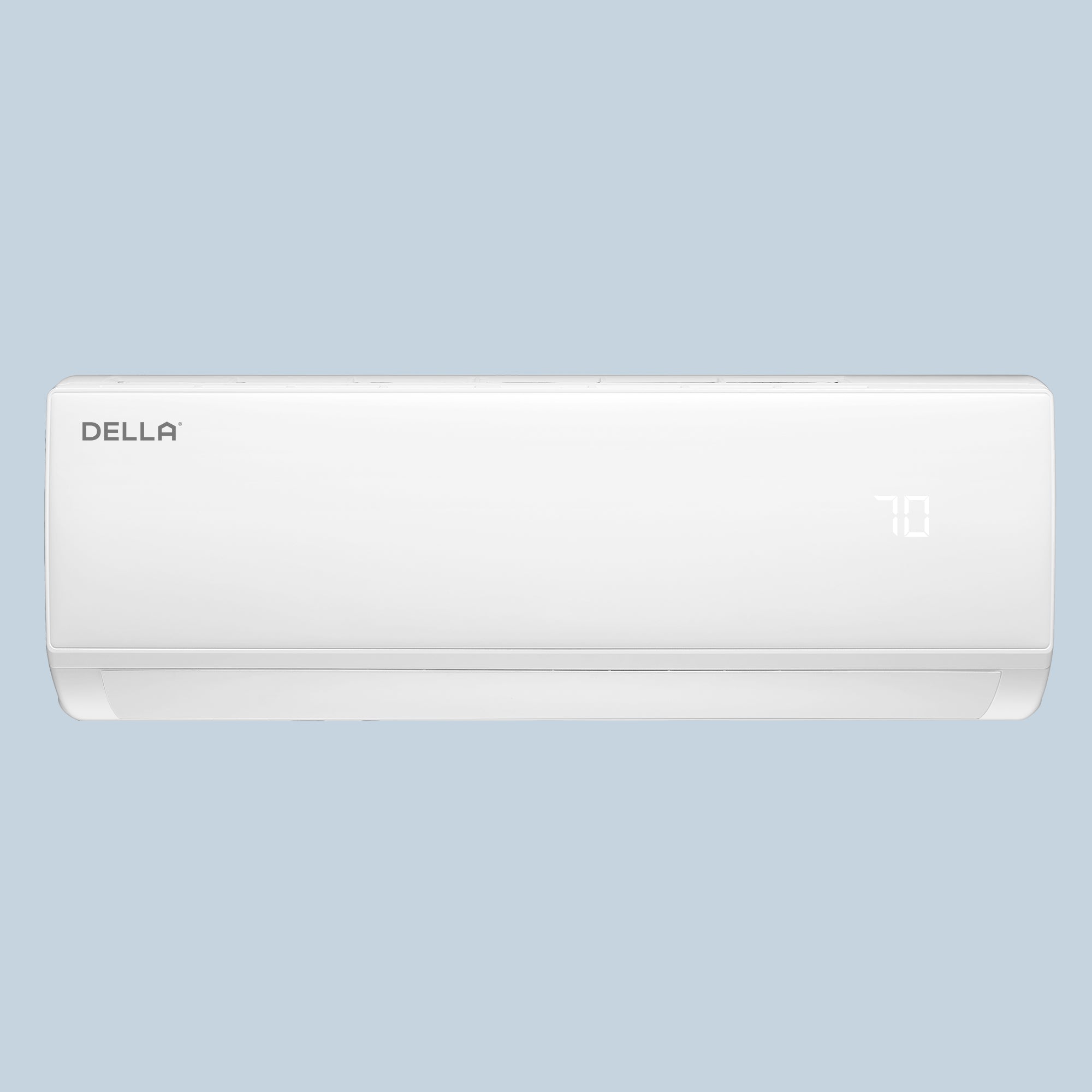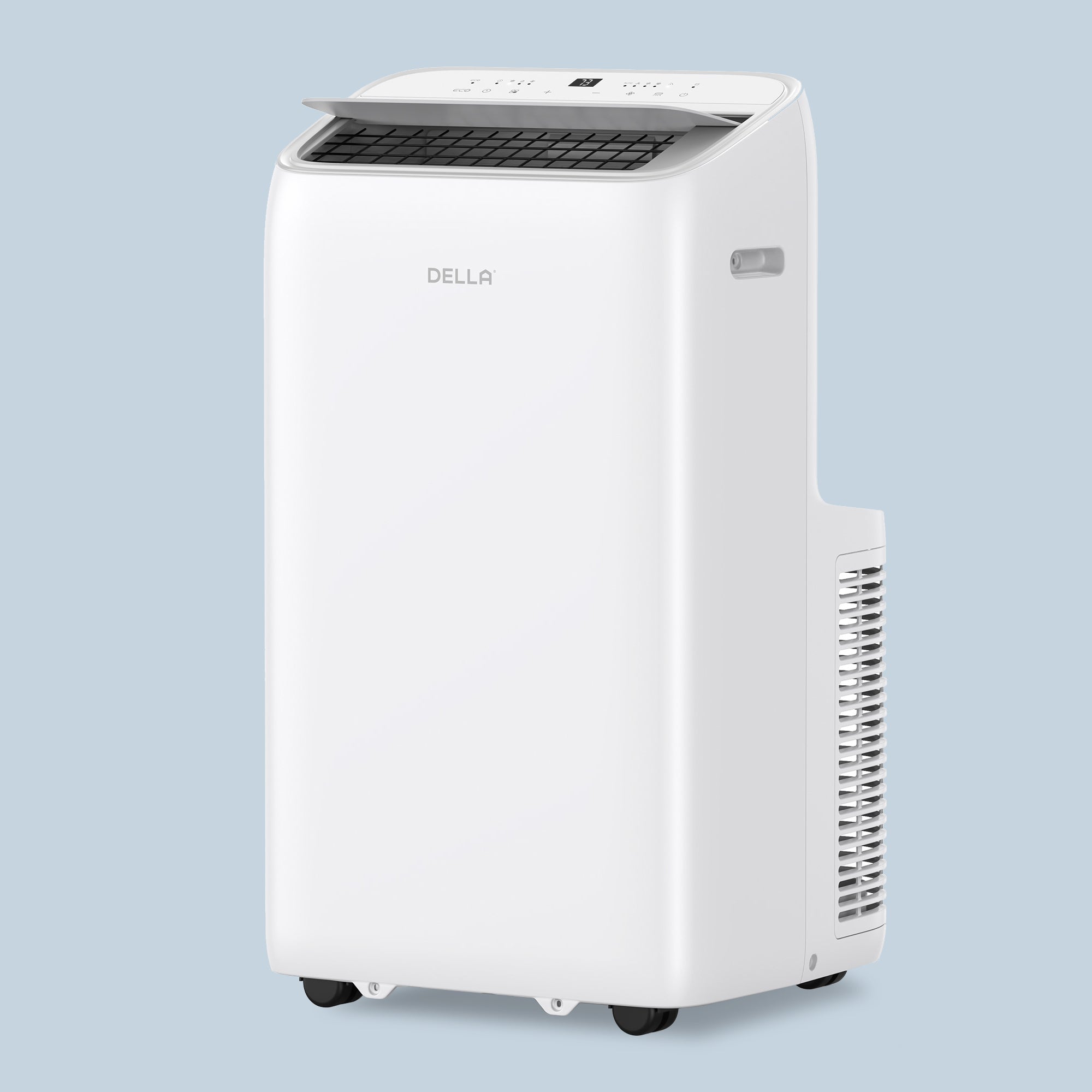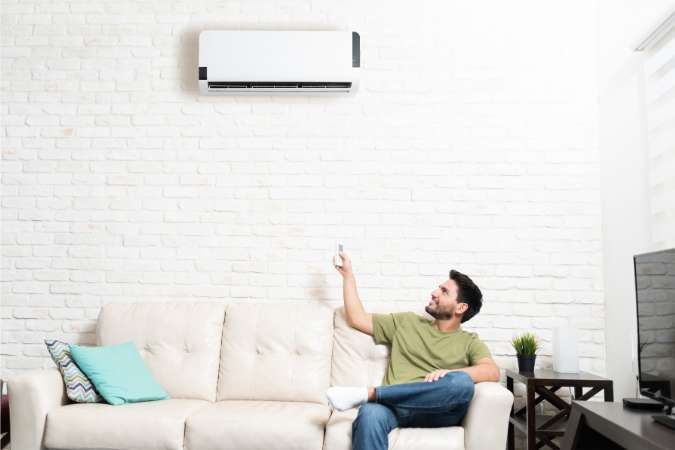Knowing the power usage of your mini split air conditioner will help you better manage your energy consumption and reduce costs. In this guide, we'll break down the factors affecting power usage and provide tips to help you maximize efficiency.
How Many Watts Does a Mini Split AC Use?
The wattage that a mini split air conditioner uses largely depends on its BTU rating, which measures the mini split unit’s capacity to cool or heat a space.
Here's a breakdown of common mini split AC sizes and their approximate power usage in both cooling and heating modes:
-
9,000 BTU Mini Split: This smaller 9000 Btu Air Conditioner system, ideal for rooms up to 450 sq ft, typically uses between 700 and 900 watts for cooling. In heating mode, the wattage increases slightly to around 1,000 watts.
-
12,000 BTU Mini Split: 12000 BTU Air Conditioners are suitable for spaces around 600 sq ft, this unit consumes around 900 to 1,500 watts when cooling, and between 1,200 to 1,800 watts for heating.
-
18,000 BTU Mini Split: Designed for larger areas up to 1,000 sq ft, this system draws 1,400 to 2,000 watts in cooling mode and approximately 2,000 to 2,500 watts in heating mode.
-
24,000 BTU Mini Split: This unit can cool or heat areas up to 1,500 sq ft, consuming 2,000 to 2,500 watts for cooling and 2,500 to 3,500 watts for heating.
-
36,000 BTU Mini Split: For even larger spaces up to 2,000 sq ft, this size uses 3,500 to 4,500 watts when cooling and between 4,000 to 6,000 watts during heating.
Here’s a quick summary of these mini splits energy consumption ranges for reference:
| BTU Rating | Wattage (Cooling) | Wattage (Heating) |
| 9,000 BTU | 700 - 900 watts | 1,000 watts |
| 12,000 BTU | 900 - 1,500 watts | 1,200 - 1,800 watts |
| 18,000 BTU | 1,400 - 2,000 watts | 2,000 - 2,500 watts |
| 24,000 BTU | 2,000 - 2,500 watts | 2,500 - 3,500 watts |
| 36,000 BTU | 3,500 - 4,500 watts | 4,000 - 6,000 watts |
Mini Split Energy Consumption Calculator
To estimate your mini split’s energy consumption, you need to know the wattage of your unit and how many hours per day it operates. Here's a simple formula to help you calculate energy usage:- Energy Consumption (kWh) = (Wattage × Hours of Use) ÷ 1,000
- (1,200 watts × 8 hours) ÷ 1,000 = 9.6 kWh per day

Do Mini Splits Use a Lot of Electricity?
Mini splits are highly energy-efficient systems, and this can be measured using SEER (Seasonal Energy Efficiency Ratio) and EER (Energy Efficiency Ratio) for cooling, HSPF (Heating Seasonal Performance Factor) for heating, and the overall Coefficient of Performance (COP).Cooling Efficiency: SEER and EER
Mini splits typically offer SEER ratings between 20 and 30, and EER values from 10 to 12. While central air systems typically have a SEER of 13–16 and window ACs have SEER ratings of 10.Heating Efficiency: HSPF
Mini splits also excel in heating efficiency, with HSPF ratings between 8 and 13. In contrast, electric space heaters convert electricity directly into heat, consuming around 1,500 watts with a much lower efficiency.Overall Efficiency: COP
With COP values of 3 to 4, mini splits deliver three to four times the cooling or heating output compared to the electricity they consume. Electric heaters, on the other hand, have a COP of 1.Factors that Affect the Power Consumption of a Mini Split
Several factors influence the power consumption of a mini split system.Heating and Cooling Capacity (BTUs)
The capacity of a mini split, measured in BTUs (British Thermal Units), indicates how much energy the system uses to heat or cool a space. Larger units are designed to cover bigger areas and naturally consume more power than smaller units.Single Zone vs. Multi-Zone
A single-zone system cools or heats just one room, making it more efficient for smaller spaces. On the other hand, while convenient, multi-zone setups tend to consume more power because they distribute energy across different areas, increasing overall demand.Inverter Compressor
Mini splits with an inverter compressor operate by varying the compressor speed based on the temperature needs, avoiding the constant start-stop cycle of traditional systems. This leads to smoother operation and lower power consumption.Square Footage
The size of the space being cooled or heated directly impacts energy use. Larger areas require more energy to maintain the desired temperature, while smaller rooms consume less power.Insulation
Well-insulated spaces retain heat during winter and keep cool air in during summer, reducing the workload on your mini split. Poorly insulated spaces force the system to work harder.Usage Habits
How often and for how long you run the mini split affects power consumption. For example, continuously running the system at very low or high settings or turning on and off frequently can increase electricity usage.Mini Split Efficiency
The system's efficiency is determined by its SEER (cooling), HSPF (heating), and COP (overall performance). Higher efficiency ratings mean the unit consumes less energy while delivering the same output.
How to Reduce the Electricity Bill of a Mini Split
Reducing the mini split air conditioner electricity costs can be achieved by following practical tips.Use the Correct Settings
Make sure to use energy-efficient settings. For cooling, a comfortable setting around 75°F reduces power use, while in heating mode, setting the temperature around 68°F can help save energy without sacrificing comfort.Utilize Energy-Saving Modes
Most modern mini split systems come with energy-saving modes, such as Eco Mode or Sleep Mode. These settings adjust the system’s output based on the time of day and temperature variations, ensuring minimal power usage during periods of low demand.Install a Programmable Thermostat
A programmable thermostat allows you to set specific times for the mini split to operate, preventing the mini split system from running when it’s not needed.
Optimize Room Insulation
Seal any gaps or leaks around windows, doors, and walls can ensure that your room or home is well-insulated. This reduces the amount of energy your mini split needs to cool or heat the space.
Regular Maintenance
Performing regular maintenance on your mini split ensures it runs efficiently. Clean the air filters regularly, check for any blockages in the outdoor unit, and have the system professionally serviced once a year.
Keep the Outdoor Unit Clear
The outdoor unit of your mini split should have plenty of space for proper airflow. Ensure that it's free from debris, leaves, or any other obstructions that could reduce its efficiency.
Use Zoned Cooling/Heating Efficiently
If you have a multi-zone mini split system, use zoned cooling and heating strategically. Only cool or heat the rooms you are using to avoid unnecessary power consumption. And close doors to unused rooms to help keep the conditioned air focused on the spaces.
Save Your Mini Splits Costs and Enjoy Cooling Now
Efficient power usage and optimized settings are key to minimizing your mini split costs. By implementing smart energy-saving practices to maintain your system well. To get started with a high-efficiency mini split system, visit Della for top-quality options that will help you stay cool and save more. Don't miss out our best air conditioner sale deals!
FAQs About Mini Splits Power Use
Should I turn my mini split off at night?
You don't necessarily need to turn it off at night. Instead, use the sleep or eco mode if available. These modes automatically adjust the temperature to conserve energy while maintaining a comfortable environment.
What is the best temperature to keep a mini split on?
The best temperature for a mini split depends on your comfort level and the season. In cooling mode, aim for 75°F; in heating mode, set it around 68°F. Adjusting within this range maximizes energy efficiency and keep your home comfortable.
Read More








LEAVE A COMMENT
All comments are moderated before being published.
This site is protected by hCaptcha and the hCaptcha Privacy Policy and Terms of Service apply.